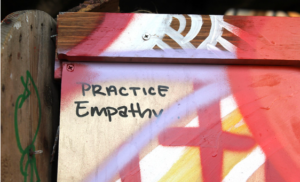7 Active Listening Techniques for Better Communication
Fast-paced communication often leads to typing quick responses, blurting out thoughts, or having brief conversations that lack a deeper understanding. However, great communication involves more than just talking; it requires listening. Actively listening helps improve understanding, build meaningful relationships, and resolve conflicts. When you listen actively, you show respect for the speaker and are more likely to fully grasp their message. In this blog post, I’ll share seven techniques that will help you perfect your active listening skills, enhancing your communication both at home and in the workplace.

1. Give Your Full Attention
Why It Matters
Giving your full attention during a conversation is essential for effective communication. When you focus entirely on the speaker, without distractions you show that you value what they have to say. This simple act not only builds trust and respect but also fosters a deeper connection. People feel heard and understood when they receive your undivided attention, which strengthens relationships and creates a more positive, open environment.
In contrast, distractions or divided attention can make the speaker feel unimportant or dismissed, leading to misunderstandings or missed details. By fully engaging, you can better grasp the speaker’s message, emotions, and intent, allowing for clearer communication and stronger, more meaningful exchanges.
How to Practice It
Don’t Multitask: Put away your phone, mute notifications, and close tabs. If you’re in a remote meeting, shut off your Wi-Fi and close out of slack and any other distractions.
Keep Eye Contact: Eye contact demonstrates to your speaker that you’re following the conversation.
Mind Your Body Language: Face the speaker, nod occasionally, and lean slightly forward to show that you’re attentive and interested.
2. Avoid Interrupting
Why It Matters
Avoiding interruptions is crucial in maintaining respectful and productive communication. When you let someone speak without cutting them off, you give them space to fully express their thoughts and emotions. This shows that you respect their perspective and are genuinely interested in what they have to say.
On the other hand, you can shut down the speaker’s train of thought and make them feel unheard or undervalued. It can lead to frustration, disrupt the flow of conversation, and even escalate conflicts. This allows for better problem-solving, deeper connections, and clearer communication.
How to Practice It
Wait For a Pause: Allow the speaker to complete an utterance before you interject with your reaction.
Don’t Rehearse Responses: Don’t think about what you’re going to say next; think about what the speaker is saying.
Use Non-Ver: If you have something to contribute, give the verbal equivalent of a nod or a raised palm, but wait until the speaker is done.

3. Show That You’re Listening
Why It Matters
When you provide visual and verbal cues—like nodding, maintaining eye contact, or offering brief affirmations such as “I see” or “Go on”; you signal to the speaker that you are engaged and valuing their words. These simple actions encourage the speaker to continue sharing, fostering a sense of trust and mutual respect.
Failing to show you’re listening can make the speaker feel ignored or dismissed, leading to miscommunication or disengagement. When people sense that you’re not fully present, they may hesitate to share openly or feel their message isn’t important. By actively showing that you’re paying attention, you create a more supportive environment where ideas can be exchanged freely, resulting in clearer understanding and stronger relationships.
How to Practice It
Nod and smile: These are the easiest, most universally helpful gestures to make the speaker feel that they have been heard.
Verbal Affirmations: ‘I see’, ‘Go on’, or ‘That makes sense’ indicate that you’re tracking along with them.
Mirror the Speaker’s Emotions: Your facial expressions and tone of voice can mirror the emotions of the person with whom you’re communicating if you pay close attention.
4. Reflect and Paraphrase
Why It Matters
Reflecting and paraphrasing are powerful tools in communication that help ensure clarity and understanding. When you reflect on what someone has said and then paraphrase it in your own words, you confirm that you’ve accurately grasped their message. This practice not only helps avoid misunderstandings but also demonstrates to the speaker that you’re actively engaged and value their thoughts.
How to Practice It
Begin your paraphrase with phrases such as ‘What I hear you saying is…’
Mirror Feelings: Repeat back what you heard from the other person: ‘I’m hearing that you feel upset about this situation.’
Paraphrase and then Check: ‘Um, so are you saying that it’s not just about what you see but also about how your visual system works?’ And after: ‘So you’re saying that…?’ Confirmation: ‘Um, so are you saying that it’s not just about what you see but also about how your visual system works?’ And after: ‘So you’re saying that…?’ Rephrase and then recheck: ‘Sorry, what you’re saying is…’ And after: ‘So, you’re saying that…?’
5. Ask Open-Ended Questions
Why It Matters
By asking questions that begin with ‘what’, ‘why’ and ‘how’, the speaker will often go on to talk about the question you’ve asked, adding layers of meaning that closed questions wouldn’t necessarily touch. This opens up space for the topic to expand and for the listener to go deeper than they might with a closed question. It shows the speaker that you haven’t just heard what they said but have taken in the deeper meaning.
How to Practice It
Use ‘What’, ‘How’, and ‘Why’ Questions: Ask questions that are not just Yes/No questions, but require more detail in an answer. For example, ‘What do you think happened to cause this?’ or ‘How did that make you feel?
Press For More Details: If the spouse doesn’t elaborate much, follow up with a few questions to prompt them to give more detail.
Prompt Reflection: Ask questions that force the speaker to think more deeply. For example: ‘What do you think might be done differently next time?
6. Summarise the Conversation
Why It Matters
Summarizing a conversation helps reinforce key points and ensures everyone involved has a shared understanding. By briefly recapping the main ideas, you confirm that both you and the speaker are on the same page, reducing the chances of miscommunication. This practice also gives the speaker an opportunity to correct any misunderstandings and provides closure to the discussion. In turn, it fosters clarity, enhances collaboration, and strengthens relationships by showing that you value the conversation.
How to Practice It
Closing Summary: Summarise the main points raised and, if needed, the decisions made or actions agreed upon.
Wrap it Up: If you’re still unclear about something, ask for clarification before ending the call.
Confirm Next Steps: If there are action items from the conversation, recap them and confirm the next steps with the person you are speaking to.

7. Practice Empathy
Why It Matters
Empathizing means feeling what another person is experiencing. When you actively listen with empathy, you connect more deeply with the speaker, making them feel supported and understood. It’s not just about hearing their words; it’s about sharing in their emotions. This deeper connection strengthens communication and shows genuine care for what they are going through.
How to Practice It
Put Yourself in the Speaker’s Shoes: Try to project yourself into the speaker’s place and imagine how you would feel if you were delivering the speech.
‘I can see how that would be upsetting.’ Acknowledge their feelings, even if you don’t agree with what they said.
This can be done by Providing Comfort and Sustenance if Possible: ‘Look at me; I know how difficult this must be. I’m here for you. I know it’s not easy to talk about, but I’m here if you want to. I care about you.’ 2. Talking the Talk: Once it becomes clear that the person is ready to open up, you can initiate a more conversation-oriented approach.
Conclusion
Improving your active listening skills can significantly enhance both your personal and professional relationships. Here are seven techniques to practice: paying attention, avoiding interruptions, showing you’re listening, reflecting and paraphrasing, asking open-ended questions, summarizing the conversation, and practicing empathy. By using these methods in your interactions, you’ll become a more effective communicator and build strong, trusting, and respectful relationships. Active listening goes beyond just hearing words—it ensures you understand the speaker’s message and, importantly, respond with empathy.

